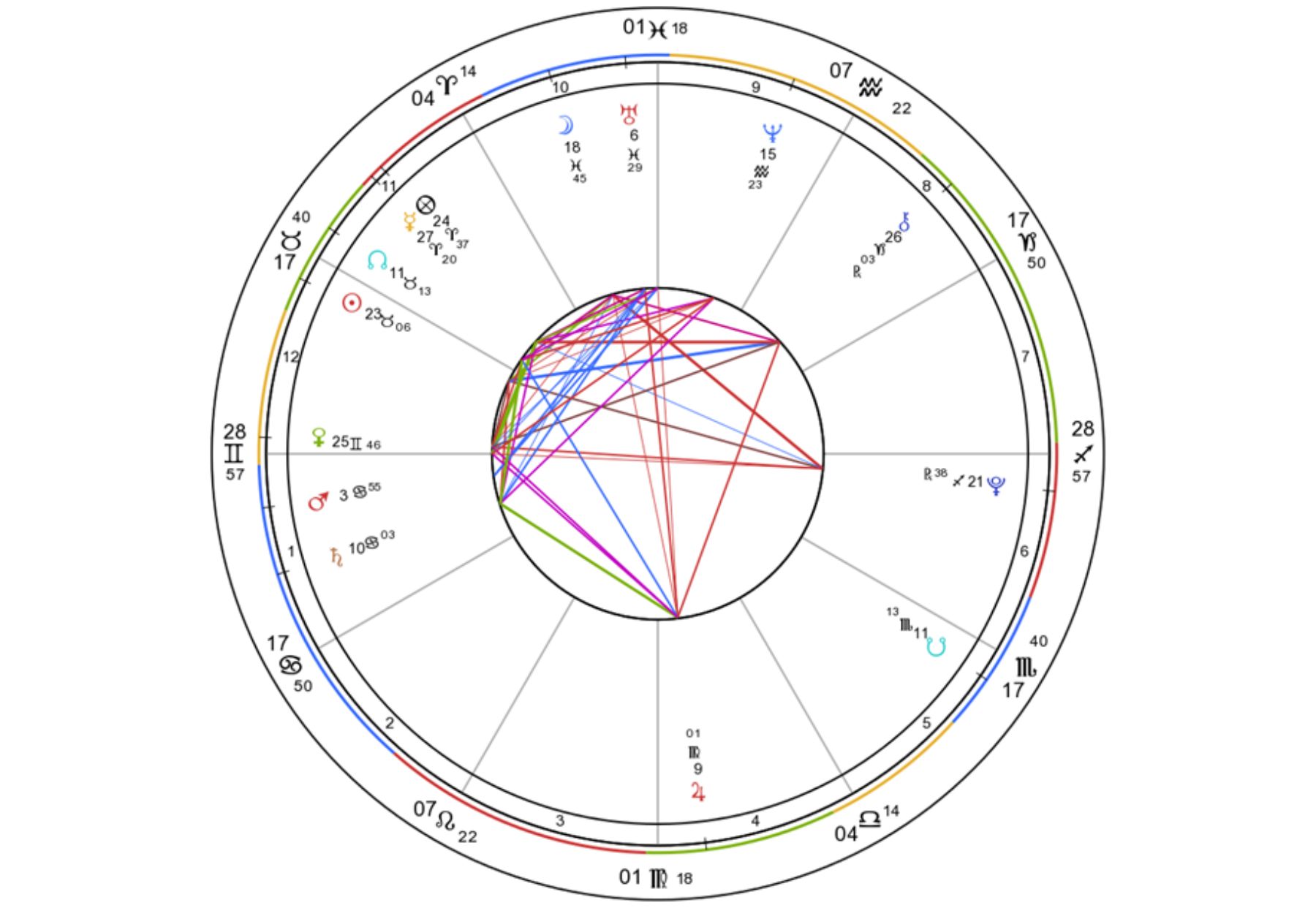In the ever-evolving landscape of business, leaders are constantly seeking innovative methods to gain a competitive edge. While traditional strategies like market analysis and financial planning remain essential, an unconventional tool is gaining traction among savvy professionals: astrology. Astrology holds potential as a valuable resource for understanding human behavior, predicting trends, and making strategic decisions.
In celebration of FlexTrades’ 20th birthday this May, I delved into its astrological birth chart out of curiosity. Given my interest in astrology, I wanted to see how the present planetary positions might influence my workplace. Stay tuned until the end of this blog to get a glimpse into the process we used to discover FlexTrades’ astrology and how we intend to use it. For now, let’s explore how astrology can be utilized to enhance business practices and drive success.
Understanding Astrology in Business
At its core, astrology is the study of celestial bodies’ positions and their influence on human affairs. While some may view it skeptically, many successful individuals and businesses have leveraged astrological insights to their advantage. Astrology operates on the belief that celestial alignments can impact individuals’ personalities, behaviors, and even broader societal trends.
In the context of business, astrology offers valuable insights into consumer behavior, market trends, and optimal timing for decision-making. By understanding the unique characteristics associated with different astrological signs, businesses can tailor their marketing strategies, product offerings, and customer interactions to resonate more effectively with their target audience.
Utilizing Astrological Insights
- Consumer Profiling: Just as marketers create buyer personas based on demographic data, they can also incorporate astrological insights to refine their understanding of consumer preferences. For example, individuals born under the sign of Leo might be drawn to products that emphasize luxury and self-expression, while those under Virgo may prioritize practicality and attention to detail.
- Timing Strategies: Astrology offers guidance on auspicious timing for launching new products, initiating marketing campaigns, or making major business decisions. By consulting astrological calendars, businesses can align their activities with favorable planetary alignments, maximizing their chances of success.
- Team Dynamics: Understanding the astrological profiles of team members can enhance communication, collaboration, and conflict resolution within organizations. By recognizing individuals’ strengths, weaknesses, and communication styles based on their astrological signs, managers can foster more productive and harmonious work environments.
- Strategic Planning: Astrology provides a broader perspective on cyclical patterns and long-term trends, enabling businesses to anticipate market shifts and adapt their strategies accordingly. By identifying recurring planetary alignments associated with economic cycles or industry-specific trends, businesses can proactively position themselves for success.
Considerations
While astrology offers unique insights, it’s essential to approach its use in business with a critical mindset. Skeptics argue that astrology lacks empirical evidence and scientific validity, making it unreliable as a basis for decision-making. Additionally, relying too heavily on astrological guidance may lead to confirmation bias or oversimplified interpretations of complex market dynamics.
However, some of the most successful companies in the world, like Coca-Cola, are proponents of astrological business practices. They emphasize astrology as a complementary tool rather than a sole determinant of strategy. When used in conjunction with traditional data analysis and strategic planning, astrology can offer fresh perspectives, creative inspiration, and a deeper understanding of human behavior.
Some like to think of astrology as a weather report, much like grabbing an umbrella when rain is predicted, or choosing an alternate route for your daily commute if you’re aware of certain areas prone to flooding and traffic jams during rainy weather; knowing astrological forecasts can help you anticipate and plan for upcoming events.
Conclusion
In the dynamic and competitive landscape of business, companies must explore unconventional avenues for gaining insights and achieving success. Astrology, with its rich history and unique approach to understanding human behavior, holds promise as a valuable resource for businesses seeking a competitive edge. By incorporating astrological insights into consumer profiling, timing strategies, team dynamics, and strategic planning businesses can unlock new opportunities for growth and innovation.
Ultimately, whether one chooses to embrace astrology or remain skeptical, its influence on human culture and decision-making cannot be denied. In the realm of business, those who dare to explore its potential may discover hidden opportunities and insights that lead to greater prosperity and success.
How To Decode a Business Birth Chart
The first part in decoding a business birth chart involves gathering founding information. This includes the date, time and location of its birth—the more specific the better. Tracking down the exact time is likely the most challenging piece. Some ways you can do this are: using the timestamp from a significant purchase like a business license or website domain name or the time your doors opened for the first time.
As someone who uses astrology in my personal life, I knew how important determining the time is because it helps give a more accurate reading by utilizing the rising sign (AKA your Ascendant). Your rising sign represents your social personality or the energy that you put into the world.
For FlexTrades we used the first mark on our company’s historical timeline—May 13, 2004 “Open for business with two employees”. This felt like a very clear sign to use May 13, 2004, for our birthdate and 8:00am for our birthtime.
From here you can calculate the business natal chart by using astrology software like Astrograph.com or consulting a professional astrologer. The resulting chart will depict the positions of the Sun, Ascendant, Moon, planets, and other astrological components at the time of the company’s establishment.
From here, you can consult a professional astrologer to walk you through how astrological house positions and current planetary placements may impact your business.
Curious to know more about FlexTrades’ astrology?
Here is a sneak peek into FlexTrades’ Big 3 (Sun, Ascendent/Rising and Moon signs) and the characteristics that represent those signs.
- Sun (will and purpose): Taurus
- Ascendent/Rising (social personality): Gemini
- Moon (emotional nature): Pisces
Taurus is an earth sign, known for its stability, and reliability. Taureans are grounded, provide a strong foundation, value security, and seek stability. They are also determined, persistent, dependable, and consistent.
Geminis are highly adaptable individuals who embrace new experiences with enthusiasm. They are natural communicators, have a strong intellectual curiosity, and enjoy exploring new ideas, concepts,
Pisceans are compassionate with a natural inclination to help those in need and are drawn to humanitarian causes. They are also imaginative, idealistic, and naturally inspire those around them.
It’s no surprise that the prominent traits emphasized in FlexTrades’ Big 3 support our brand’s personality and archetype exploration efforts. This enhances the perception of FlexTrades to our diverse audience – including technicians, clients, and the communities we serve. At FlexTrades, our commitment lies in making a difference every day by being reliable, intelligent, down-to-earth, and honest. We show up consistently and authentically to serve our technicians, clients, and communities exemplifying thought leadership, transparency, and possibility.

Here’s a glimpse at FlexTrades’ natal chart, created with astrograph.com’s free birth chart tool. Lucky for us novice to intermediate astrology readers, the astrology software tool will provide insights into planetary symbols, aspects, placements, and their significance. We recommend consulting a professional astrologer to gain a comprehensive understanding of your chart and how the planetary placements and aspects could influence your company. Happy forecasting and strategic planning!







